Carolina Oneto is a South American Industrial Engineer with a Master’s degree in Business Engineering. She worked in the industry and was a university professor for more than 10 years. In 2010, Carolina and her family left Santiago, Chile to relocate to Buenos Aires, Argentina. After the birth of her third child, she chose this opportunity to slow her life down. It was at this time that she discovered her love of patchwork. Carolina went on to study patchwork and quilting with Cecilia Koppman and Teresita Leal, and afterward has traveled yearly to study with experienced quilters here in the US. In addition, Carolina’s time spent studying “The Interaction of Color” at the art school of Chile’s Catholic University has had a huge influence on her work. Color (and its interaction) is a recurring theme for her. Carolina teaches classes and workshops in her studio. She has also partnered with Janome Chile to teach workshops in the Janome Academy and in the craft fair “Materia Prima” throughout Chile. This year, Carolina has taught workshops in Buenos Aires, and in September she participated as Professor of The Quilt and Patchwork Festival in Gramado, Brazil. She is member of the Modern Quilt Guild, member of the Studio Art Quilt Association (SAQA) and the International Quilt Association. Carolina lives in Chile with her husband and their three children. Welcome, Carolina! [Editor’s Note: this interview is presented in both English and Spanish.]
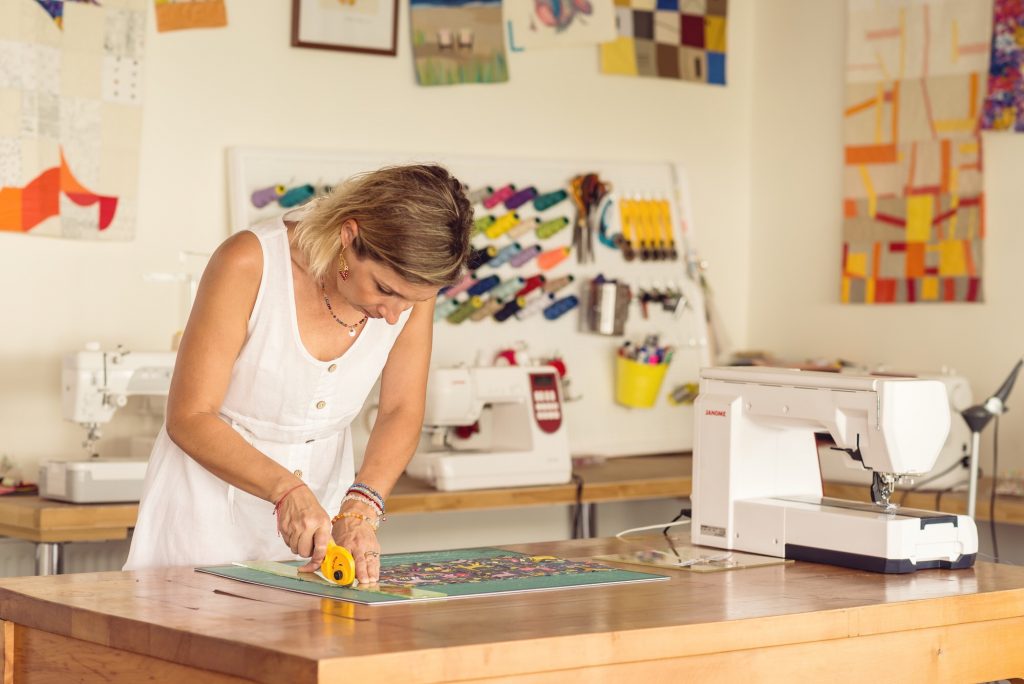 How would you describe your quilting style/aesthetic?
How would you describe your quilting style/aesthetic?
Carolina: I consider myself a modern quilter, fanatic of solid fabrics. Most of my quilts are made with solid and you would rarely see some prints on my work.
I like to alternate improvisation with planning. I love to move between these two different worlds.
Sometimes I just need to improvise and create and to let the result surprise me. Although I can’t avoid that, in one way or another, my mathematical mind leads me to establish a rule or sequence within my improvisation.
There are also times where I plan, design and calculate beforehand the quilt that I will make. Nevertheless, no matter which one of these two methods I choose, play and interaction with colors are key. This is the formula that is always present in my work, thus you can always discover a sequence or mathematical formula that defines the movement of color.
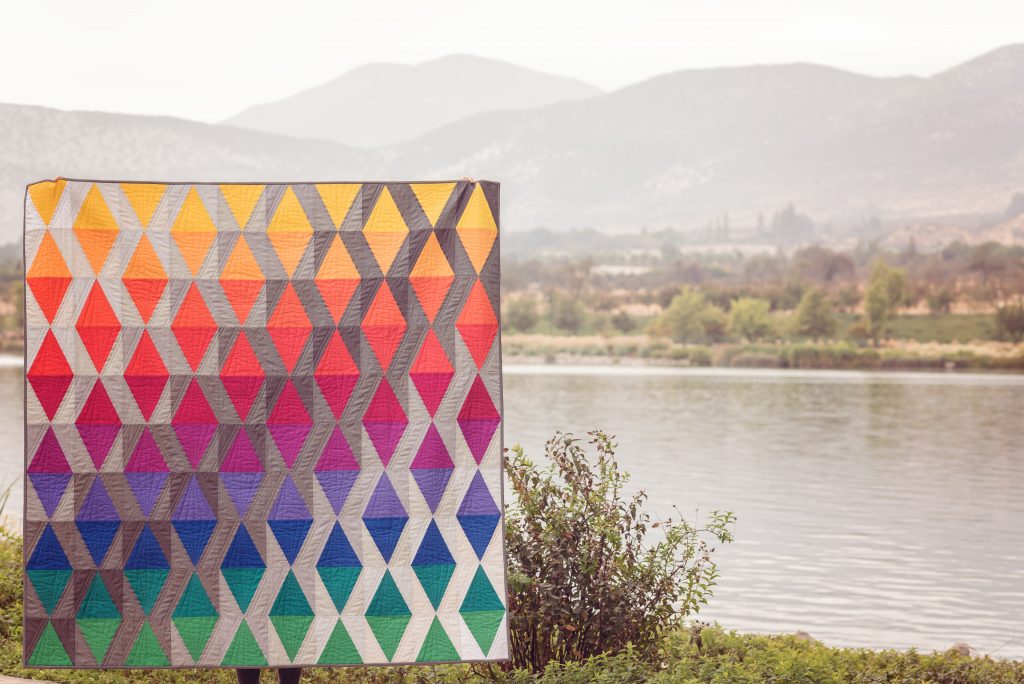
Sky With Diamonds. Image courtesy of Carolina Oneto.
Me considero una quiltera Moderna, fanática de las telas sólidas, ya que casi todos mis quilts son hechos con ellas, verán muy poco estampado en mis obras.
Me gusta alternar la improvisación con la planificación, me fascina moverme entre estos dos mundos tan distintos. Hay veces que necesito simplemente improvisar y crear y que el resultado me sorprenda, aunque es inevitable que de alguna u otra forma, mi mente matemática me lleve a colocar alguna regla o secuencia dentro de la improvisación. Otras veces planifico, diseño y calculo a priori el quilt que voy a realizar, eso si, en cualquiera de estos dos mundos, el juego y la interacción del color son claves para mi. Es el juego que siempre está presente en mis obras y donde siempre se puede descubrir alguna secuencia o formula matemática que define este movimiento del color.
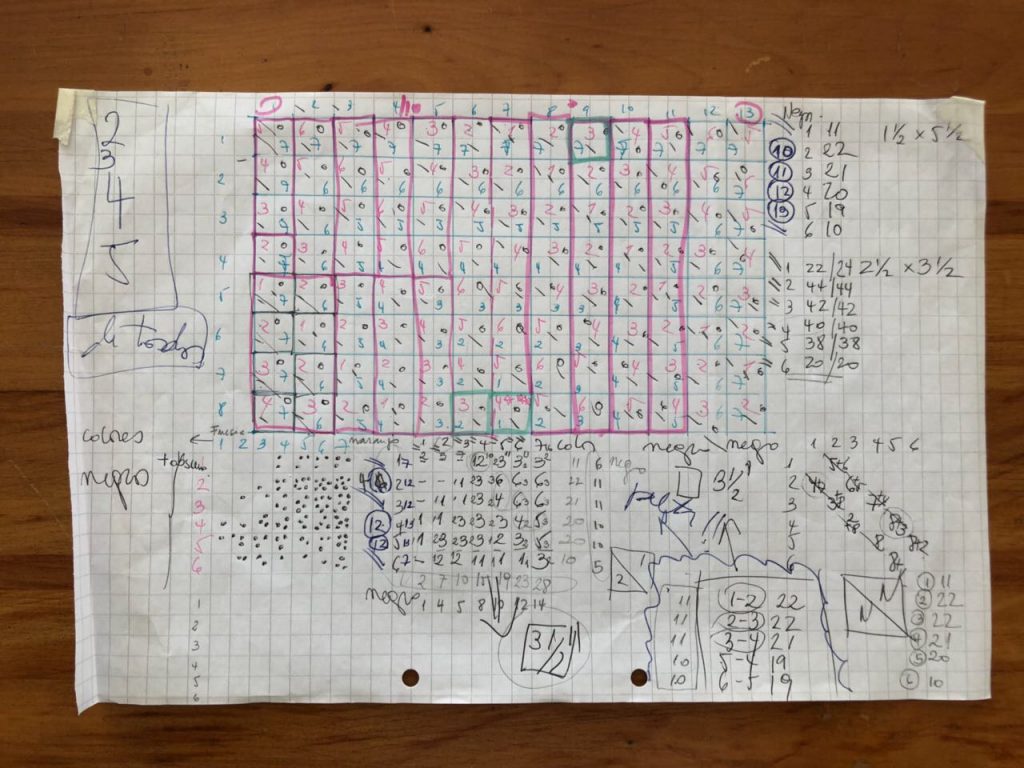
Working out the mathematical formula for a quilt in the planning stage. Image courtesy of Carolina Oneto.
How would you describe the creative environment in your home as a child?
Carolina: Talk about a creative environment! I can say that during my childhood I had plenty of time… to play, to imagine and to create.
My parents were teachers, and there was always chalk at home, which my brother and I used to create great pieces of art in the street that was right outside of our house, we could have spent the whole afternoon drawing. I also remember, a specific wall in our house, which after being drawn on by us several times, without permission, my mom decided to ‘give it to us’ so we could freely draw our creations.
We borrowed old clothes to create costumes, we used our toys to create plays, we built shelters and castles with boxes, furniture, chairs and tablecloths. Every time we had the chance to go to the countryside or to the sea, we enjoyed nature but also play with our imagination.
During my childhood, I lived in Valparaíso, a charming port of my country, filled with colors, streets, poets, hills, history and the sea.
Later on, my interest in music and the flute grew. My parents encouraged and supported my new passion and enrolled me into the music conservatory, where I studied for more than 5 years.
Last but not least, is that I always been surrounded by creative women. One of my grandmothers used to crochet, while my other grandmother used to knit and sew, and my mom, despite of her work and her four children, always managed to knit, to sew and to do some delicious cooking.
I think that each one of these aspects are the seeds of creativity that live within me and that continue flourishing.
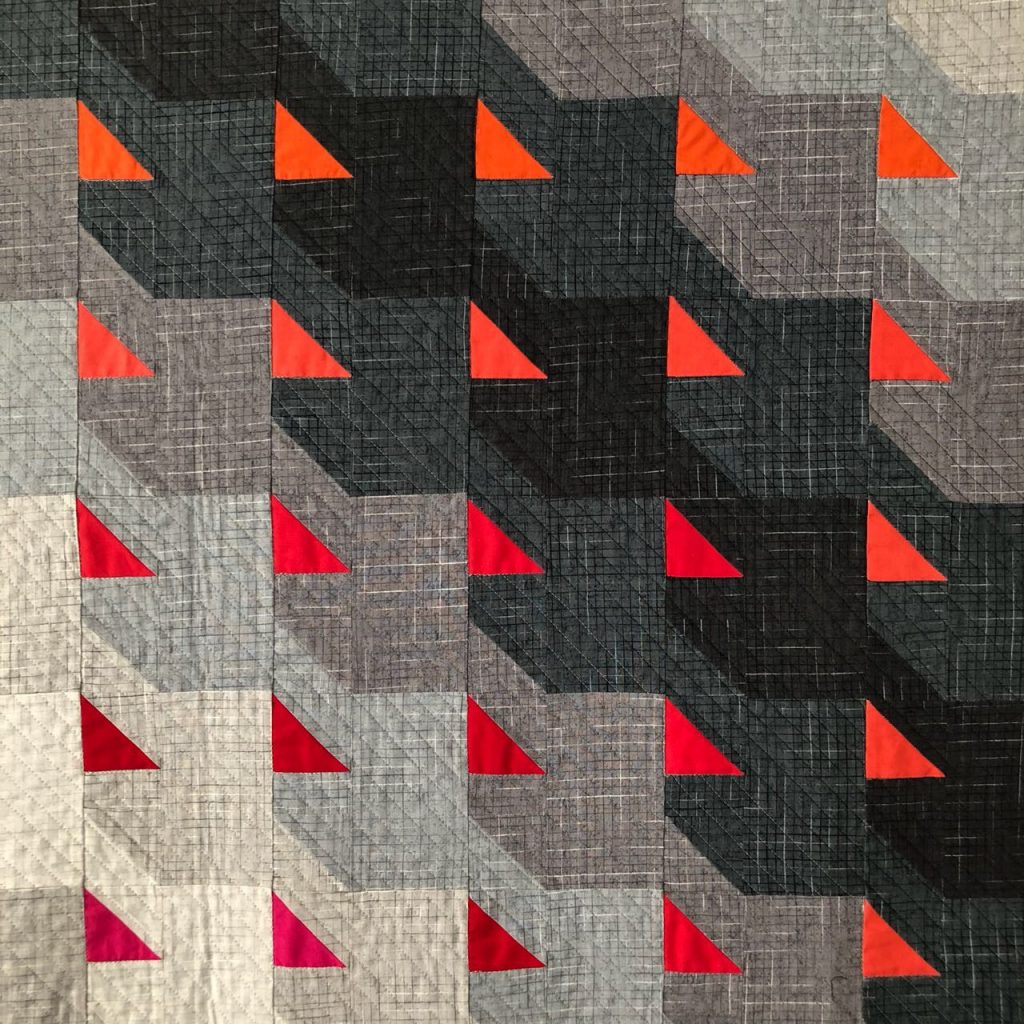
Into the Deep. Image courtesy of Carolina Oneto.
Más que hablar de un ambiente creativo, podría contarles que en mi niñez tuve mucho tiempo y libertad para jugar, imaginar y crear. Mis padres era profesores, por lo que en casa siempre habían tizas, que usábamos con mi hermano para crear grandes obras de arte en la calle que estaba fuera de nuestra casa, podíamos estar tardes enteras haciendo dibujos. También recuerdo una pared de nuestra casa, que después de ser dibujada repetidas veces sin permiso, mi mamá optó por “regalarnos” esa pared para dibujar nuestras creaciones.
Jugábamos a los disfraces con ropas viejas, creábamos obras de teatro con nuestros juguetes, construíamos guaridas y castillos, con cajas, muebles, sillas y manteles y en cada paseo al campo o mar pudimos disfrutar de la naturaleza y jugar con nuestra imaginación. De pequeña viví en Valparaiso, pintoresco puerto de mi pías, lleno de colores, calles y cerros, historia y mar.
Ya más grande, mi interés por la música y la flauta dulce, fue apoyado y motivado por mis padres que me enviaron al conservatorio de música donde estudié por más de 5 años.
No menos importante, es que estuve siempre rodeada de mujeres creativas, mi abuela paterna tejía crochet, mi abuela materna tejía a palillos, a telar, me hacía ropa, cocinaba, y mi madre a pesar de su trabajo y 4 hijos, siempre se las arregló para tejer, coser y cocinar delicioso. Así creo que cada uno de estos aspectos, fueron la semilla de creatividad que hasta hoy me acompaña y sigue floreciendo.
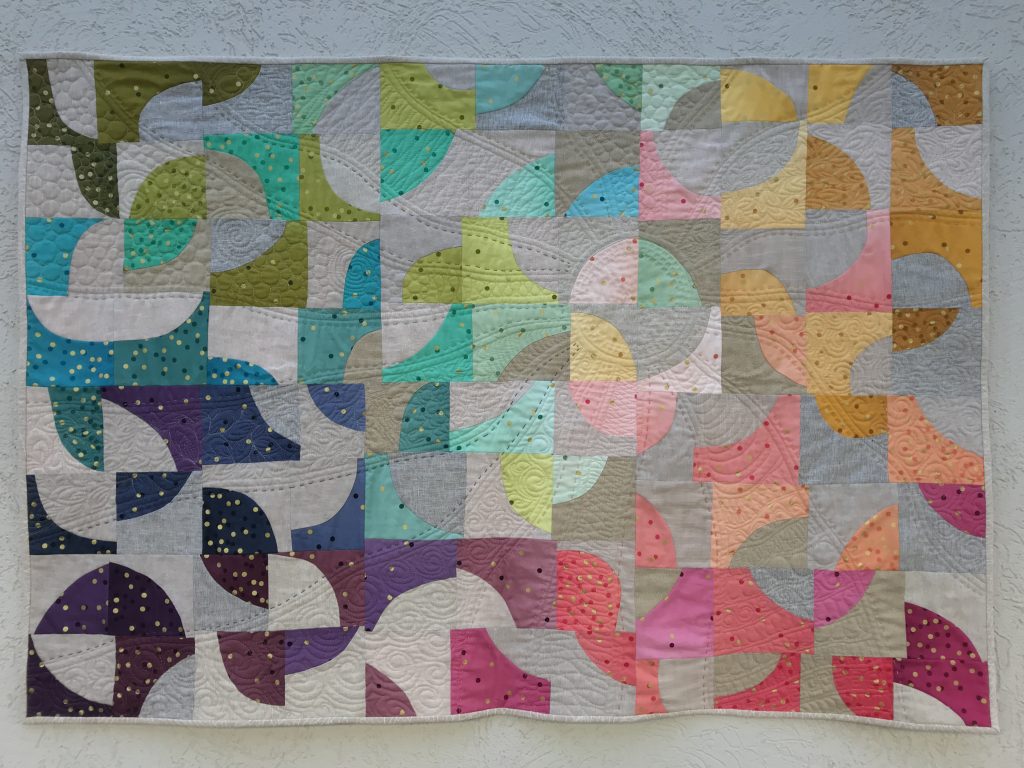
Sol Improvisado. Image courtesy of Carolina Oneto.
What artists and makers do you most admire or have an influence on your work?
Carolina: I could mention so many! Such a difficult question … If we talk about artists and textile artists that I admire, I could mention: Monet, Chagall, Paul Klee, Kandinsky, Vasarely, Anni Albers, Ursula Kern, Nancy Crow, Gwen Marston … among many others!
From textile artists and makers that I admire and from whom I have learned a lot, I can mention Cecilia Koppmann, Lucia Stacchetti, Jacquie Gering, Christina Camelli, Sherri Lynn Wood among many, too!
Not only do I feel influenced by other artists but for me music is a source of endless influence and fantastic inspiration. (In fact, I have been thinking on a project where I could transform music into colors thus I could make a quilt that would represent a song).
The same thing happens with math and science, I’m always thinking about curves, equations, sequences that can be transformed into a quilt.
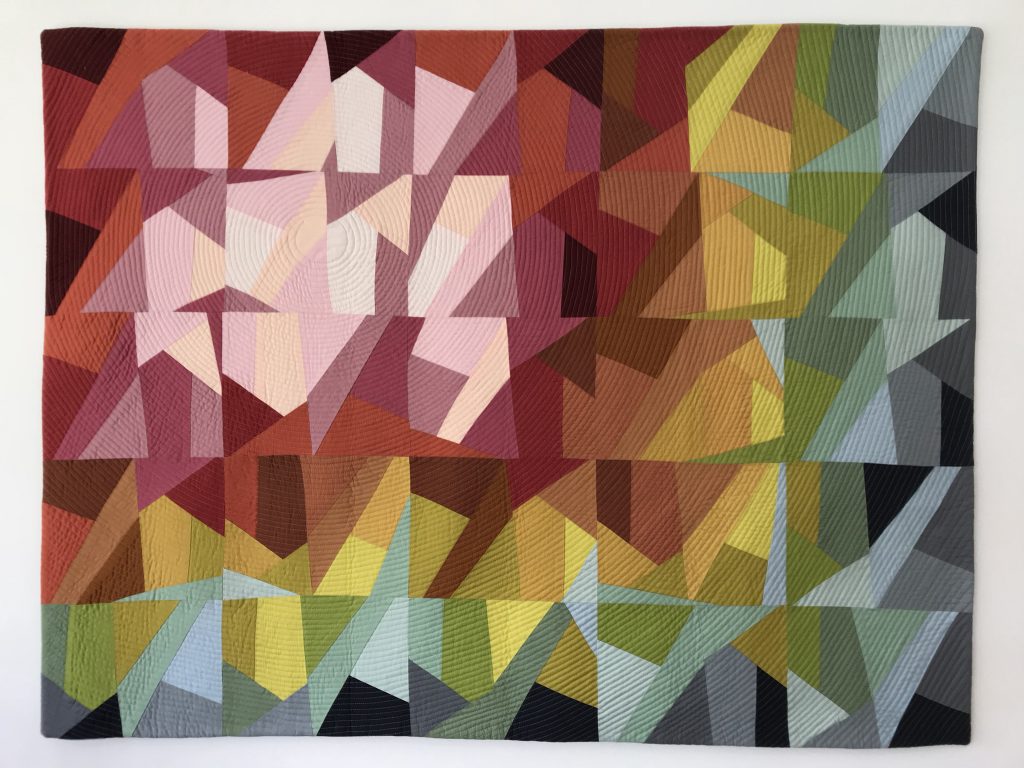
Color Explosion. Image courtesy of Carolina Oneto.
Podría hablar de muchos! Difícil pregunta….Si hablamos de artistas y makers que admiro, podría nombrar a Monet, Chagall, Paul Klee, Kandinsky, Vasarely, Anni Albers, Ursula Kern, Nancy Crow, Gwen Marston…entre muchos más!
De artistas textiles y makers que admiro y de quienes he aprendido muchísimo puedo nombrar a Cecilia Koppmann, Lucía Stacchetti, Jacquie Gering, Christina Camelli, Sherri Lynn Wood entre muchos también!!!
Ahora, no sólo me siento influenciada por otros artistas, para mi la música es una fuente de influencia e inspiración infinita y fantástica (un proyecto que tengo en el tintero es el de trasformar la música, en colores, para así hacer un quilt que representa una canción), lo mismo me sucede con las matemáticas y la ciencia, siempre estoy pensando en fenómenos, curvas, ecuaciones, secuencias que puedo transformar en un quilt.
Do you consider yourself a “quilter”, an artist, or some combination of both?
Carolina: I consider myself both! I am an artist who express herself through the fabrics and quilts.
I am an Industrial Engineer, but, all my life, art and music have been a part of my life, or rather, I have always been seeking them. I studied music, watercolor, until the paths of life lead me to the creation of quilts, a profession in which I constantly keep learning while developing it from an artistic perspective. Where my work is a creation that seeks the aesthetics and communication of my ideas, my vision of the world, my feelings and memories.
Me considero ambos! Soy una artista que me expreso y creo a través de las telas y quilts.
Mi formación profesional es de Ingeniero Industrial, pero toda mi vida el arte y la música han estado presentes, o mejor dicho, siempre los he buscado….estudié música, acuarela, hasta que los caminos de la vida me llevaron al quiltmaking, oficio en el que sigo aprendiendo constantemente pero que lo desarrollo desde una perspectiva artística, donde mis obras son creaciones con fines estéticos y de comunicación, para expresar mis ideas, mi visión del mundo, mis sentimientos y recuerdos.
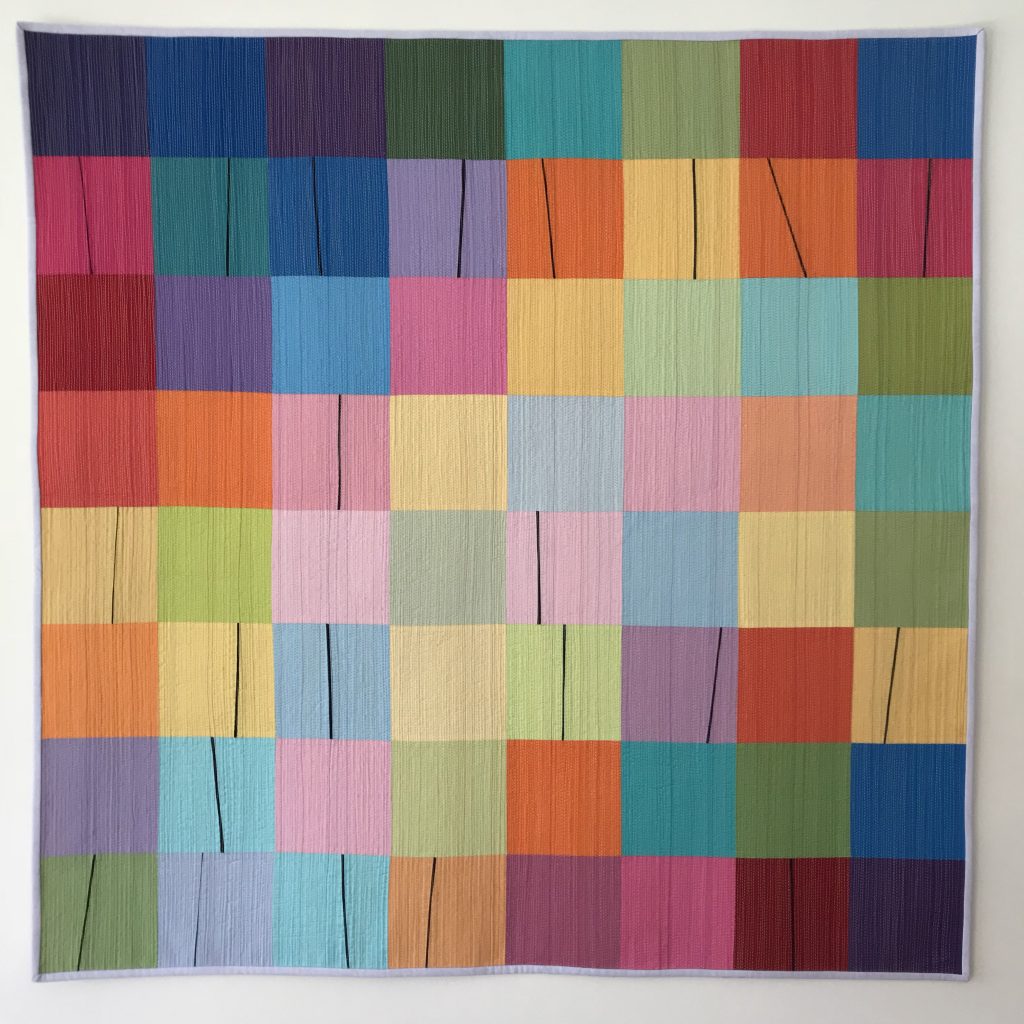
Equality. Image courtesy of Carolina Oneto.
How would you define “making with intention”?
Carolina: To be honest, this is how I define everything I do, every quilt that I make has an intention: to be a gift, to explore a technique or to express a concept, whatever it is, its genesis is given by a meaning or intention.
La realidad es que así defino todo lo que hago, cada quilt que comienzo tiene una intención; ser un regalo, explorar una técnica o expresar un concepto, sea lo que sea, su génesis viene dada por un motivo o intención.
Do you think that having a craft makes us more compassionate? If so, then how?
Carolina: I don’t think that because I am a quilter I am more compassionate.
When I start to create something, I do it from an individual perspective, in connection with myself, with what I want to express and my feelings.
On the other hand, when I teach this beautiful craft, I do feel that I can be more compassionate, by allowing myself to be thoughtful, by trying to teach and explain, by understanding that we are all different and that we all have different skills and ways of doing things, by teaching quilt I do feel compassion.
Also, I have realized that my Studio has become a much more complex place than a simple patchwork studio. With sewing machines, rulers, fabrics and cutters, it has also become a meeting point, where we can trust and support one another.
La verdad es que el ser una quiltera, no siento que me haga más compasiva. Cuando creo, lo hago desde una perspectiva totalmente individual y en una conexión conmigo misma, con lo que quiero expresar y con lo que siento.
Por el contrario, cuando enseño este hermoso oficio, sí siento que puedo ser más compasiva, al ponerme en el lugar de otro, al tratar de explicar y enseñar, al entender que todos somos distintos y tenemos habilidades y formas de hacer las cosas distintas, en este rol de profesora de quilt, si siento que la compasión puede verse más desarrollada. Además he descubierto que mi Estudio se transforma en un lugar mucho más complejo que un simple estudio de patchwork, con máquinas de coser, reglas, telas y cortadores, ya que se transforma en un lugar de encuentro, de confianza, de apoyo y amistad.
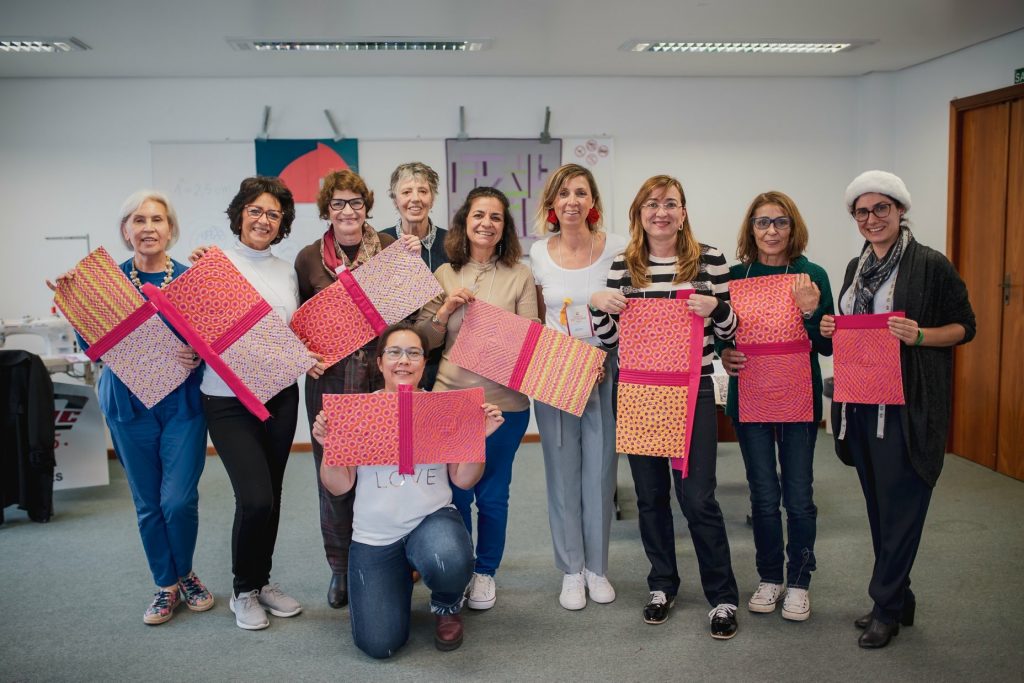
Carolina with participants of a workshop that she taught at a studio in Brazil at the International Quilt Festival in Gramado. Image courtesy of Carolina Oneto.
How does creating feed your soul/spiritual purpose?
Carolina: The creative process is what feeds my soul. It is that meaningful moment and place in time where I connect with myself and all that is now.
I’ve been practicing meditation for a couple of years. During the creative process, I have realized that there are times when I am able to reach a state of abstraction similar to the one during meditation. In some way, your brain focusses on the work you are making but at the same time it is also withdrawing ideas and emotions of your lifetime.
Para mi crear es EL alimento espiritual que tengo, es el momento y lugar de conexión que tengo conmigo y con el ahora. Llevo un par de años practicando la meditación y en el proceso de crear hay veces que logro entrar en estados de abstracción similares a la meditación de alguna forma tu cerebro trabaja en la obra pero también va decantando ideas y emociones de tu vida.
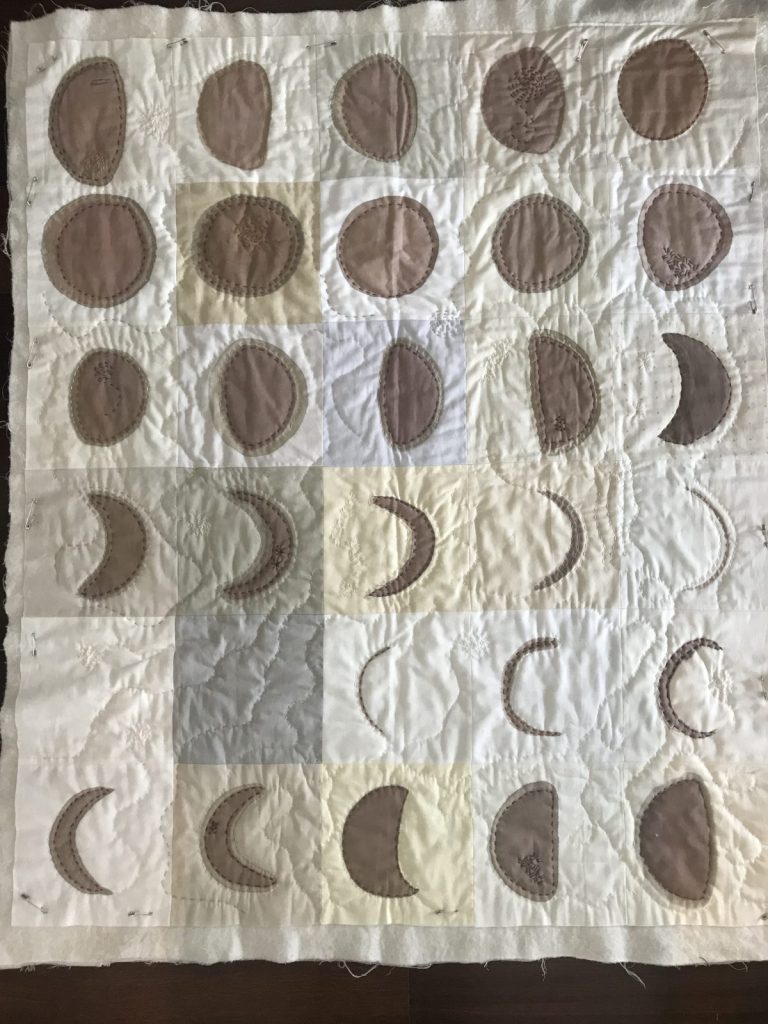
November 1976. Image courtesy of Carolina Oneto.
Are there any rituals that you perform to prepare/ground yourself in your work?
Carolina: I like to start each new project with a tidy studio (a situation that won’t last long!). I love the process of selecting fabrics, colors and for this I take all the time in the world. It’s like looking for the perfect ingredients of a magic potion! They must be exactly the right ones to design the quilt I want to do.
There are times that I select, and depending on the time of the day and the sunlight, I review these colors, to see how they look and how they change by the light and day …until I have the perfect mix for my future work.
I like to work with music a lot. I have a special playlist with my favorite songs that helps me to focus and to bring me to a state of concentration and freedom that allows me to further advance into my creations.

Artificial Light. Image courtesy of Carolina Oneto.
Cada nuevo proyecto me gusta comenzarlo con mi estudio ordenado (situación que durará con suerte un par de horas!). Amo el proceso de seleccionar las telas, los colores, aquí me tomo todo el tiempo del mundo, es como buscar los ingredientes perfectos para una pócima mágica! deben ser exactamente los indicados para el quilt que quiero hacer….hay veces que hago una selección, y dependiendo de la hora del día y de la luz del sol que haya, voy revisando estos colores, viendo como se ven y como “varían” al variar la luz y el día…..hasta que por fin tengo el mix para mi futura obra. Me gusta mucho trabajar con música, tengo una lista que hice especialmente con mis canciones favoritas para trabajar, todo esto me lleva a un estado de concentración y libertad que me permite avanzar en mis creaciones.

Le Quattro Stagioni. Image courtesy of Carolina Oneto.
What is the support system you have in place for creating your work?
Carolina: Because of my husband’s great support, I have been able to become a quilter and an artist. At home, I have my studio, where I can create and teach.
I also have 3 children, who know and understand how much I like what I do. They have learned to respect my times and my creative space. Also, they like to discuss my ideas. They give me feedback about what I am doing, especially my older daughter, Florencia.
I have also been able to have the support of many quilters from other countries both in real life and through social networks. Being a member of The Modern Quilt Guild and the Studio Art Quilt Association, have helped me to have a sense of belonging which has been key for my development as an artist.
Mi esposo ha sido el gran soporte que he tenido para desarrollarme como quiltera y artista.
En mi casa tengo mi estudio, donde puedo crear y enseñar.
Tengo 3 hijos, que saben y entienden cuanto me gusta lo que hago, han aprendido a respetar mis tiempos y mi espacio creativo, así como también todos en conjunto siempre me dan su opinión respecto a lo que estoy haciendo y a mis ideas, sobretodo mi hija Mayor Florencia.
También he podido contar con el apoyo de muchas quilteras de otros países tanto en la vida real como a través de las redes sociales, y el pertenecer al The Modern Quilt Guild y al Studio Art Quilt Association, son agrupaciones que representan un lugar de pertenencia clave para mi desarrollo.
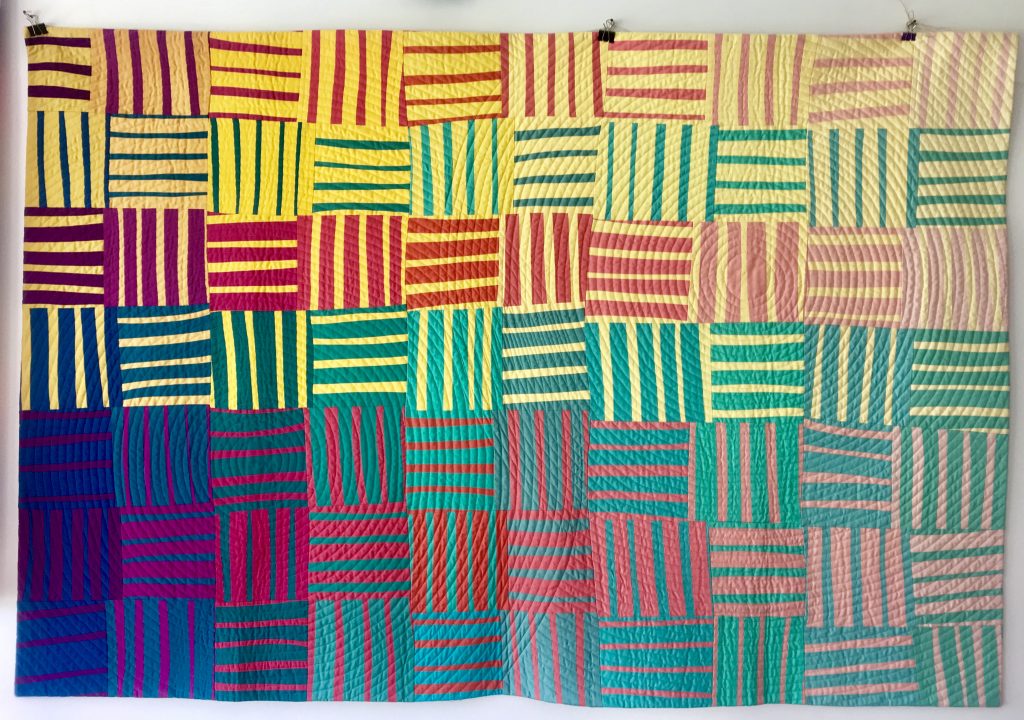
Vibrato. Image courtesy of Carolina Oneto.
How do you deal with comparison to / envy of others? Can you describe a time when you used comparison/envy/admiration to push yourself in your own work and self-discovery?
Carolina: When I started with patchwork 7 years ago, I used social networks a lot to see what was out there in the world of quilting. I live in Chile and this craft is not very known here. Nevertheless, it has a lot of potential and a lot to offer, and with some other quilters we are trying to build a path. Seeing others creating opened my eyes and helped me to discover the modern quilting.
The admiration for the work of others has led me to always learn and to try new techniques. During this process, I have been able to find my own path as a quilter by understanding what I like to do, what techniques I want to further develop, and how I want to express myself through my work.
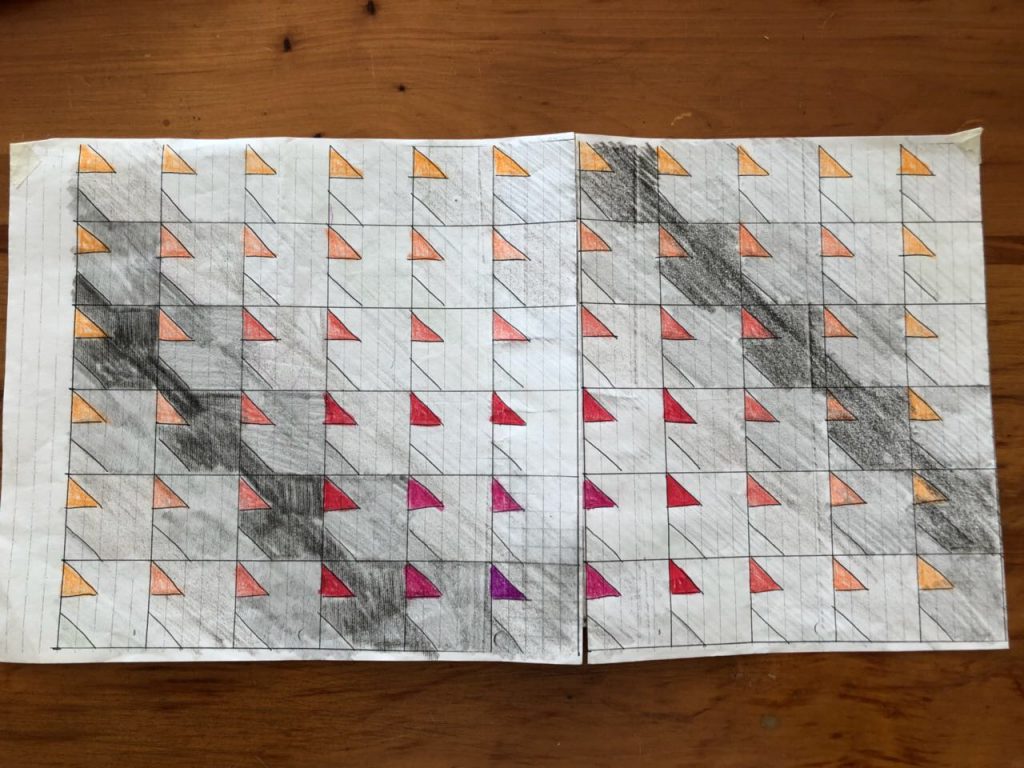
Planning stages for Into the Deep. Image courtesy of Carolina Oneto.
Cuando comencé con el patchwork hace ya 7 años, utilicé mucho las redes sociales para ver que había en el mundo del quilting, vivo en Chile y acá es un oficio poco conocido pero con mucho potencial que entre las quilteras vamos construyendo, por lo que poder ver a otros creando me abrió los ojos y me ayudó a descubrir el quilting Moderno.
La admiración por el trabajo de otros me ha llevado a aprender y probar siempre nuevas técnicas, y en este descubrir, he logrado encontrar mi propio camino como quiltera, en entender qué me gusta hacer, qué técnicas son las que quiero desarrollar y cómo es que me quiero expresar a través de mi trabajo.
What was the most challenging thing you ever made?
Carolina: The decision to make a living through Quilting.
Decidir hacer del Quilting mi trabajo y pasión.
What does it mean to you to work in a traditionally domestic medium that historically has been regarded as predominately female (aka “women’s work”)?
Carolina: I feel proud to be able to create and to make with my hands, this is a time where everything is fast and disposable but I want to show my children the beauty of handmade craft, the beauty of perseverance, the time that it requires and the value of someone’s work.
Me siento orgullosa de crear y hacer, en un momento de la vida, donde todo es rápido y desechable, les muestro a mis hijos la belleza de lo hecho a mano, de la perseverancia, de la lentitud y el valor del trabajo.
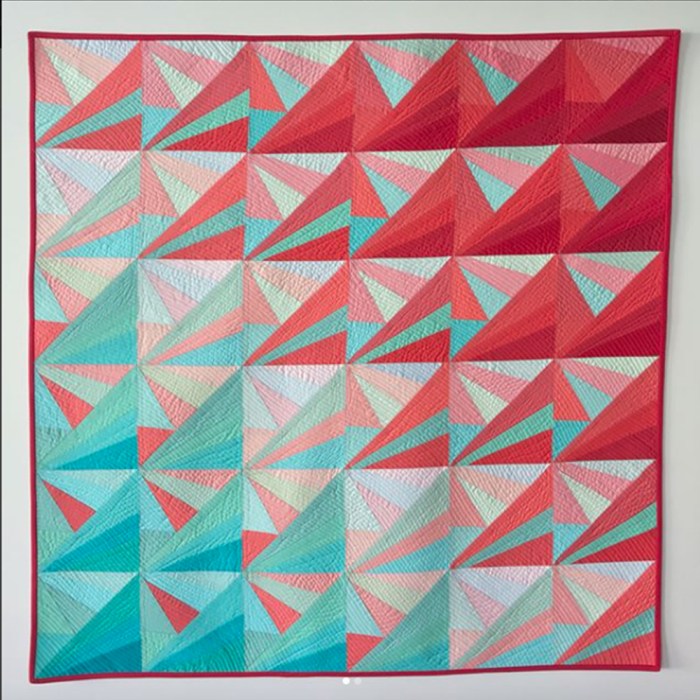
Blind Melon. Image courtesy of Carolina Oneto.
How do you see your current work in the context of quilting history?
Carolina: I like to think that I will be part of all of this from a global perspective, after coming from a small country at the end of the world called Chile. A globalized world, allows us to be many more quilting around the globe and contributing with our creations to the history of quilting worldwide.
Me gusta pensar que seré parte de esta historia desde un aspecto global, desde un pequeño país al sur del mundo llamado Chile. Un mundo globalizado, nos permite que seamos muchas más las que estemos quilteando por el mundo y aportando con nuestras creaciones a la historia del Quilting Mundial.
Thank you, Carolina! It’s amazing to see how universal the love of patchwork is, and how you’ve created an international following for your gorgeous work! For more about Carolina, or to find out more about her classes and workshops, visit her website. Also, connect with her on Instagram, Facebook or Pinterest.
Want to participate in the Creativity Project? You can do that! Click here to take the survey!
The Creativity Project can be found on Instagram, Pinterest, Twitter or Bloglovin’. Or check back here every Friday of 2018!
3 Comments
Comments are closed.

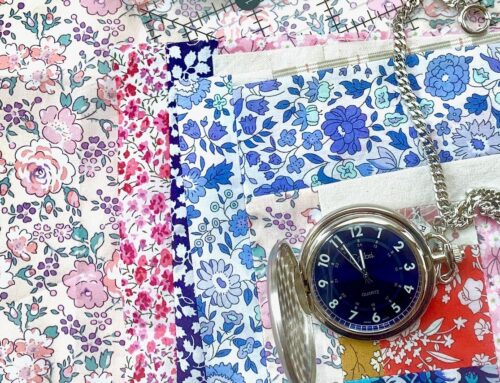
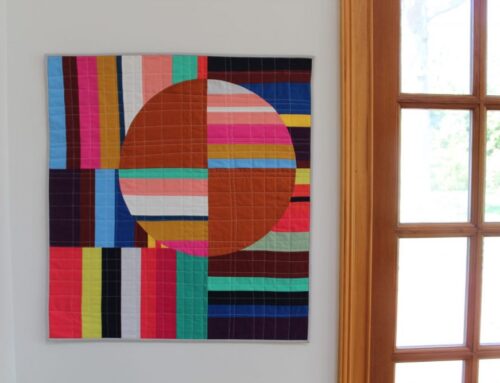
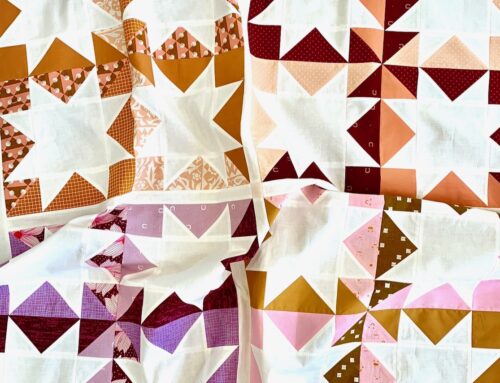

Another interesting read. This is the first time I have seen Carolina’s work. It is beautiful of course! I love the quilt with the phases of the moon. Also Vibrato is gorgeous. My favorite idea of hers might be, ‘In fact, I have been thinking on a project where I could transform music into colors thus I could make a quilt that would represent a song.’ This would be such a cool idea. Music evokes such emotion and to translate it to a quilt is just genius! I hope she is able to pull this off.
I completely agree, Bernie! And if you want to see another quilt inspired by music, check out the interview from week #16 with Laura McDowell Hopper. I’m so lucky to have featured so many incredibly talented artists over the course of this year!
[…] Entrevista completa de Leland Ave Studios […]